A crib is a perfect sleep and play space for your baby. But, how much weight can a crib hold? Knowing more about cribs is important if you want to ensure your baby’s safety.
Today, there’s so much variety when it comes to cribs. Too much, even.
There’s so much variety when it comes to alternative sleeping options, as well.
It can be difficult for parents to make an informed choice. That’s why we’re here.
Do the same weight limitations apply to each and every model? What about portable cribs and mini cribs? You surely have many questions. We’re more than happy to answer them.
Exceeding the crib weight limit poses a safety risk.
That’s why we need to get you up to speed on how much weight can a crib hold.
In general, the standard weight for cribs is set at 50 pounds. However, it’s important to note that this includes not only the weight of your baby, but all the items in the crib, too.
Even then, certain models and alternative options have different capacity.
Where to even start? As a responsible parent, understanding how much weight can a crib hold is crucial in preventing safety hazards. Here’s everything that you need to know.
The Standard Crib Weight Limit

The Consumer Product Safety Commission sets the standard crib weight limit.
As a rule, the standard crib weight limit is 35 to 50 pounds. The CPSC notes that the standard limit is applied to all types of cribs, including portable and convertible cribs.
In most cases, a baby transitions out of a crib between 18 months and 3 years old.
It’s more than unlikely for a baby to exceed the crib weight limit, but knowing how much weight a crib can hold is important because the limit includes any items placed inside it.
From blankets to toys and pillows – everything counts.
However, it’s strongly advised not to have any unnecessary items inside the crib with newborn babies in order to prevent the risk of Sudden Infant Death Syndrome (SIDS).
The risk is significantly lower after 8 months of age. At that point it’s much safer to put items inside the crib, and that’s why knowing how much weight can a crib hold is crucial.
There are a few factors at play that determine the crib’s capacity.
For example, the materials used in constructing the crib are important. It goes without saying that cribs made from wood and metal are more durable and long-lasting.
Other types of materials may have a lower weight limit, such as plastic.
Parents have to consider the design and the structure of the crib, as well.
A crib with more slats placed closely together will naturally have a much more durable design than a crib with a lower number of slats placed too far apart.
Every single detail on the crib matters in determining not only durability, but security, too.
Make sure to read the instruction manual thoroughly. The crib weight limit of your particular model is covered inside the manual. All you have to do is flip a few pages.
Going over the limit can cause the crib to collapse or tip over.
This can lead to injuries and in certain cases even death.
There are many crib safety tips that you have to keep in mind. This concerns not only how much weight can a crib hold, but the materials used, the design, durability and functions.
Factors That Affect the Crib Weight Limit
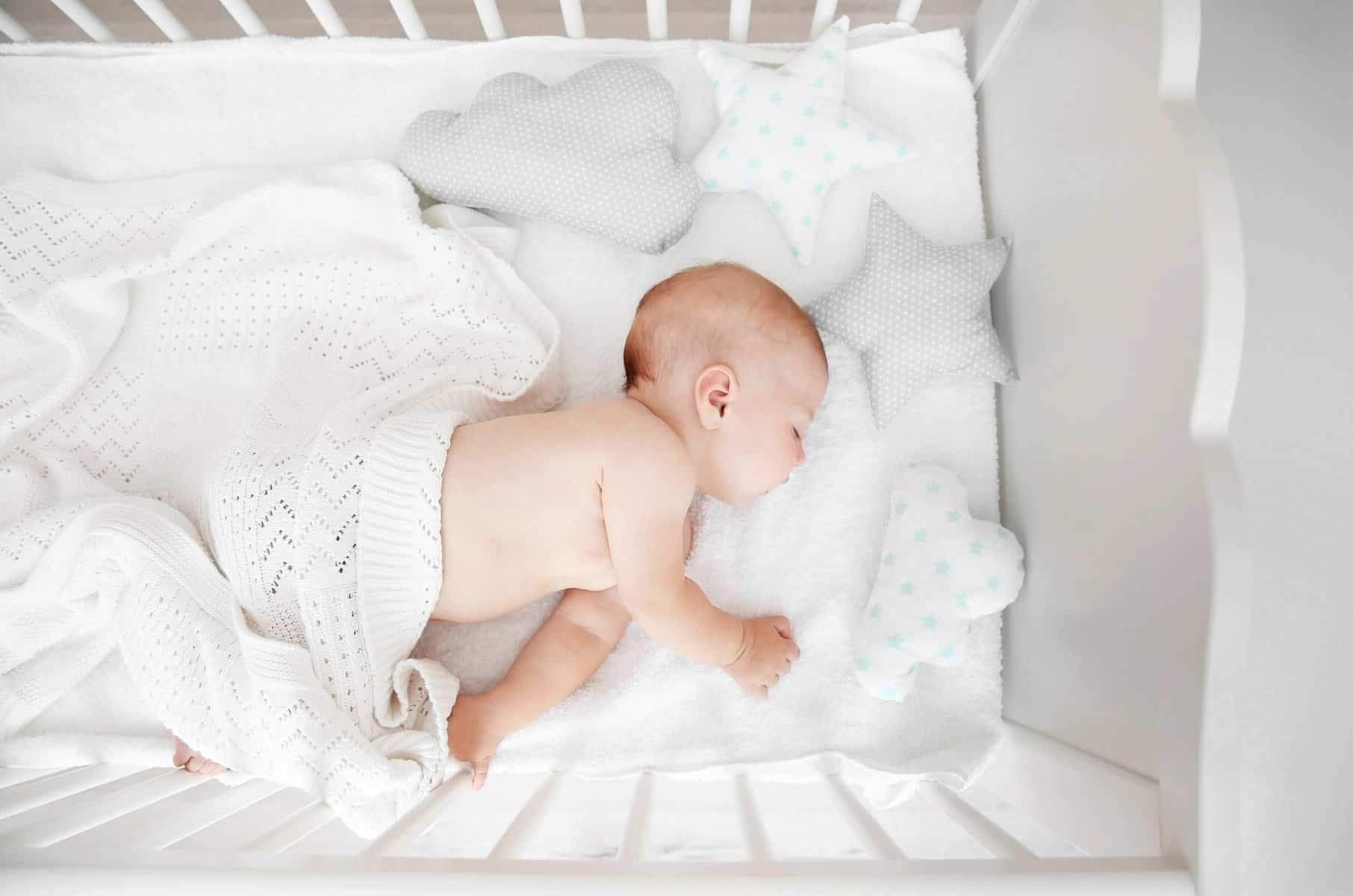
The weight limit may be 35 to 50 pounds, but some factors can compromise the rule.
You have to double check the structural integrity and stability of the crib.
Here are a few guidelines to give you a clearer picture:
• What materials is the crib made from?
The materials used in the construction of the crib determine its durability. Solid wood or metal is more sturdy, durable and long-lasting, as opposed to lightweight materials.
• How is the crib designed?
A safe, long-term crib has more support slats placed closely together.
Examine the thickness of the wood or metal closely.
Always check the mattress support for damage before placing it inside the crib. Make sure that the design is consistent with the crib weight limit listed in the instruction manual.
• How is the crib assembled?
Crib assembly is an important part of creating a secure environment.
If the crib isn’t assembled correctly, it poses a serious safety hazard. For example, if certain parts of the crib are loose, it can have a negative impact on the crib weight limit.
In other words, faulty assembly leads to instability, which leads to potential injury.
Ensure that everything fits together nicely and securely.
If you fail to assemble the crib correctly, it will likely wobble or creak. In that case, disassemble the crib and try again. If it’s still wobbly, consider hiring a professional.
Don’t cut any corners. You need the right tools for the job. Even a single missing bolt or an unsecured screw can compromise the structural integrity and stability of the crib.
If you’re assembling the crib independently, mind the instructions, and don’t rush.
• How much does the mattress weigh?
A mattress is typically sold separately from the crib.
Therefore, you have to take the weight of the mattress into account.
When shopping for one, you need to consider not only the weight, but the size.
The mattress must fit securely and snuggly inside the crib, leaving no gaps. Bear in mind that the crib’s manufacturer usually specifies the required size of the mattress.
Knowing how much weight can a crib hold is important because most standard mattresses weigh between 10 to 20 pounds. However, there are heavier mattress models available.
A heavy mattress can significantly affect the crib’s capacity.
One thing that parents often fail to consider is the actual height of the mattress – the thickness of the mattress, that is, because height can, in fact, endanger your baby.
This changes the center of gravity and potentially makes the crib less stable.
• What do you have inside the crib?
Besides, well, your baby and the mattress, anything you place inside the crib counts.
This encompasses a range of items such as toys, blankets and pillows.
It’s advised to avoid placing such items with a newborn baby, not only because you risk exceeding the crib weight limit, but because such items pose a serious risk of suffocation.
If you plan on adding any kind of additional weight on the crab, make sure that it’s safe.
For example, nursery mobiles can imposingly add to the crib’s overall weight.
Keep in mind that your baby is growing. In a few months, your baby’s weight is going to increase, so you need to doublecheck everything to prevent any kind of hazards.
Above all else, follow the manufacturer’s instructions and guidelines.
• Is your crib well maintained?
Over time, the durability of the crib changes significantly.
Regular use affects the crib’s quality. Wear and tear can cause it to become less stable, which compromises the crib weight limit. Consider the age of the crib and how it’s used.
Naturally, the materials used to make the crib deteriorate with time.
So, have you bought a new one, or are you using a hand-me-down?
Check the metal components included. Are the screws, nuts, and bolts rusty? Does the crib wobble? Does it make any kind of creaking sound or noise? Double check everything.
For example, if you have a toddler – do they jump around in the crib?
Active play inside the crib can cause it to weaken.
That said, parents have to inspect the crib regularly for wear and tear.
Check for damage often and do well to maintain the crib’s structural integrity.
Keeping Your Baby Safe in the Crib

Cribs keep babies safe and comfortable while they sleep, and provide a playing area.
Whether you just want to keep your baby in one place while you catch a well-deserved nap, or whether you’re looking to maximize the benefits, safety is your primary concern.
So, here’s a collection of must-know tips to help you keep your baby safe:
1 • Follow the manufacturer’s instructions.
Even if you have assembled cribs in the past – consider yourself a beginner.
While most cribs can hold 50 pounds, the assembly process varies.
Make sure to follow the manufacturer’s instructions carefully, not only as far as the assembly process is concerned but the actual day-to-day use of the baby crib, as well.
Therefore, it would be wise not to modify the crib in any way. Don’t add any kind of accessories, either. Simply follow the instructions provided and you will do just fine.
Before putting the crib together, make sure to double check everything.
You want to ensure the crib is in good condition and undamaged. If you see that something is wrong, don’t hesitate to contact the manufacturer directly for assistance.
2 • Verify that the crib is up to safety standards.
Before buying a nursery product, check whether it meets safety standards.
Basically, what you’re looking for is a JPMA certification.
This certification approves that the crib in question meets all the safety standards as set by the Consumer Product Safety Commission (CPSC). Only buy cribs that are certified.
The safety standards, as set by the CPSC, require that cribs have fixed sides and properly spaced slats, that the mattress fits into the crib, and that the crib has zero sharp edges.
These standards are essential, but so is choosing the right crib mattress.
3 • Find the best mattress.
So, what makes a mattress safe for a crib?
The instruction manual states the ideal dimension for a mattress. By following the instructions, you will find a firm mattress that helps to reduce the risk of SIDS.
That’s why it’s important to find a mattress that actually fits the crib.
Prioritize firmness and flatness. Make sure that it leaves no gaps at the sides of the crib. These gaps can be dangerous because they pose a risk of suffocation for your baby.
Not only that – they can also entrap and prevent movement.
Even though you may be tempted to buy a softer option, seeing as how cuddly your little angel is, you want to avoid soft and cushiony mattresses due to the risk of suffocation.
Mind the size, too. You need the perfect dimensions.
If it’s too big or to small, it may very well endanger your child.
Remember to maintain it by cleaning the mattress regularly. Babies tend to have accidents, so you want to make sure to clean your baby’s space and keep it orderly and hygienic.
4 • Don’t place items into the crib.
Besides the fact that by adding additional items into the crib, you run the risk of exceeding weight limits, doing so introduces a health hazard that you want to avoid at all costs.
Blankets, pillows, and stuffed animals – such items pose a serious risk of suffocation.
Any kind of soft object, in fact, substantially increases the risk.
Other than that, ensure that there’s no loose bedding inside the crib.
When it’s cold, dress your baby appropriately.
Don’t put blankets inside, because they can cover your baby’s face and prevent breathing.
In past years, many parents have used bumpers to reduce the risk of accidental injury inside the crib, but recent studies have shown that they, in fact, add to the overall risk.
Free up the crib of any unwanted and unnecessary items to keep your baby safe.
5 • Practice regular maintenance.
Find the time to do a thorough crib inspection now and then.
Over time, wear and tear build up and you want to make sure that the crib hasn’t sustained damage that could possibly injure your child. It’s up to you to examine it.
There are many things to inspect, but even the tiniest cracks or splits can jeopardize the safety of the baby crib. Damage can even change the weight capacity of your crib model.
Taking the time to inspect the crib helps you identify potential hazards before they become a problem or, worse, result in a serious injury. After all, being observant is safety 101.
6 • Mind where you position the crib.
What some parents fail to account for is the safety behind positioning.
As your baby ages, there’s a possibility that they become a little escape artist as they learn how to climb the crib or, in some cases, reach out to grab potentially dangerous items.
Some items, if positioned, for example, on a nearby shelf, can fall into the crib and injure your baby. Consider the safety of the environment where you will be placing the crib.
The ideal spot for a crib is near the door of the baby’s room, away from any windows.
Just make sure that there’s no furniture around to pose even the slightest of risks.
7 • Babies need to be supervised.
The purpose of a baby crib is not to confine your child.
In fact, the best way to ensure the baby’s safety is to be present as much as you can. That means observing your baby for any sign of discomfort and ensuring that the crib is safe.
Keep an eye on your baby, especially during the first few months.
Naturally, you can’t keep your eyes glued to your child, but taking the time to check up on them regularly goes a long way towards ensuring that they remain safe and comfortable.
Besides knowing how much weight can a crib hold, there’s a lot more to consider.
As covered above, here are our tips for keeping your baby safe, summarized:
- Follow the manufacturer’s instructions.
- Verify that the crib is up to safety standards.
- Find the best mattress.
- Don’t place items into the crib.
- Practice regular maintenance.
- Mind where you position the crib.
- Babies need to be supervised.
The Risks of Ignoring the Weight Limit
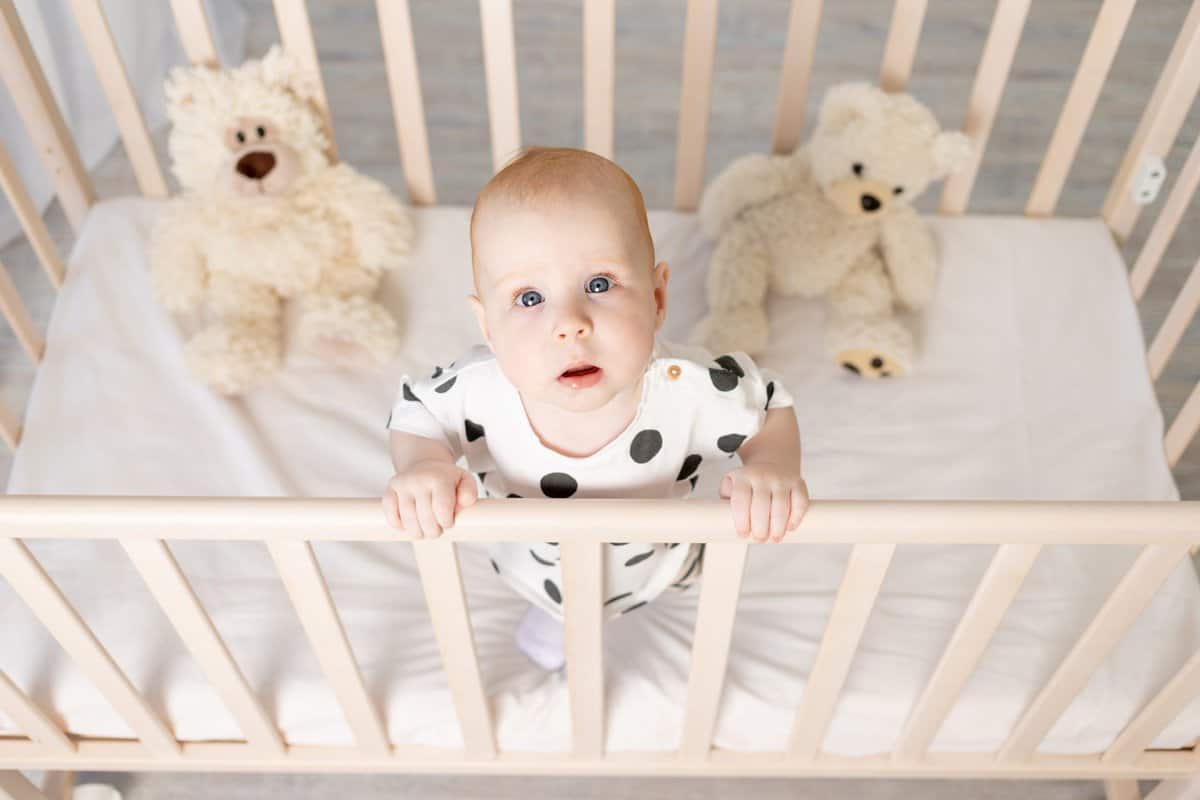
Exceeding weight limits is a recipe for disaster.
There’s a good reason why cribs have a weight capacity.
If, for example, a grown-up or a child over 50 pounds were to get into a crib, in the best-case scenario the bolts and screws would loosen, but the entire structure could collapse.
Compromising the crib’s structure can lead to potentially life-threatening accidents.
While it may not be life-threatening to grown-ups, babies could suffer serious injuries.
Therefore, knowing how much weight can a crib hold is highly important.
Even if the crib doesn’t immediately collapse, exceeding the maximum weight with additional items can break the slats and create a risk of your baby becoming trapped.
In short, ignoring the weight limit of a crib endangers your baby.
As such, you need to know how much weight can a crib hold and do everything you can to prioritize your baby’s protection by following the instructions provided in the manual.
Convertible Cribs and Mini Cribs

As alternative options to the traditional crib, convertible and mini cribs have their unique characteristics which make them great choices for parents who have very specific needs.
A convertible crib is a popular sleep option for parents who want to have a transitional piece of furniture as their baby grows older. This inevitably saves money in the long run.
So, what’s the deal? Basically, the convertible option is a useful crib for a baby because it can be converted into a toddler bed, or other types of beds, depending on the product.
Bear in mind that the range of convertibility varies among cribs.
Don’t be too hasty with your purchase. Do your research.
A convertible crib starts as a traditional crib, offering a safe space for your baby to sleep and play. However, as they age, it can be converted into a toddler bed or a full-size bed.
Some options even include a headboard and footboard, too.
That’s precisely what makes it a cost-effective option. However, convertible cribs are different, and they have their own weight capacity that you have to take into account.
In regards to the maximum weight, mind the instruction manual provided.
Especially when you’re about to make a transition, remember to check on how the maximum weight capacity changes now that you are converting it to a toddler bed.
But, what about the mini crib?
Mini cribs are smaller in size, naturally, and ideal for parents who may be struggling with space or prefer to travel. The mini crib provides a small-size bed option for young babies.
However, due to their size, mini cribs have a lower maximum weight capacity.
In general, mini cribs can hold weights ranging from 22 to 40 pounds.
As opposed to regular-sized cribs, you may have to transition your baby out of a mini crib to another sleep alternative sooner rather than later due to the weight limit of the crib.
Both options are perfectly fine so long as you mind the safety measures.
When to Transition Out of a Crib?
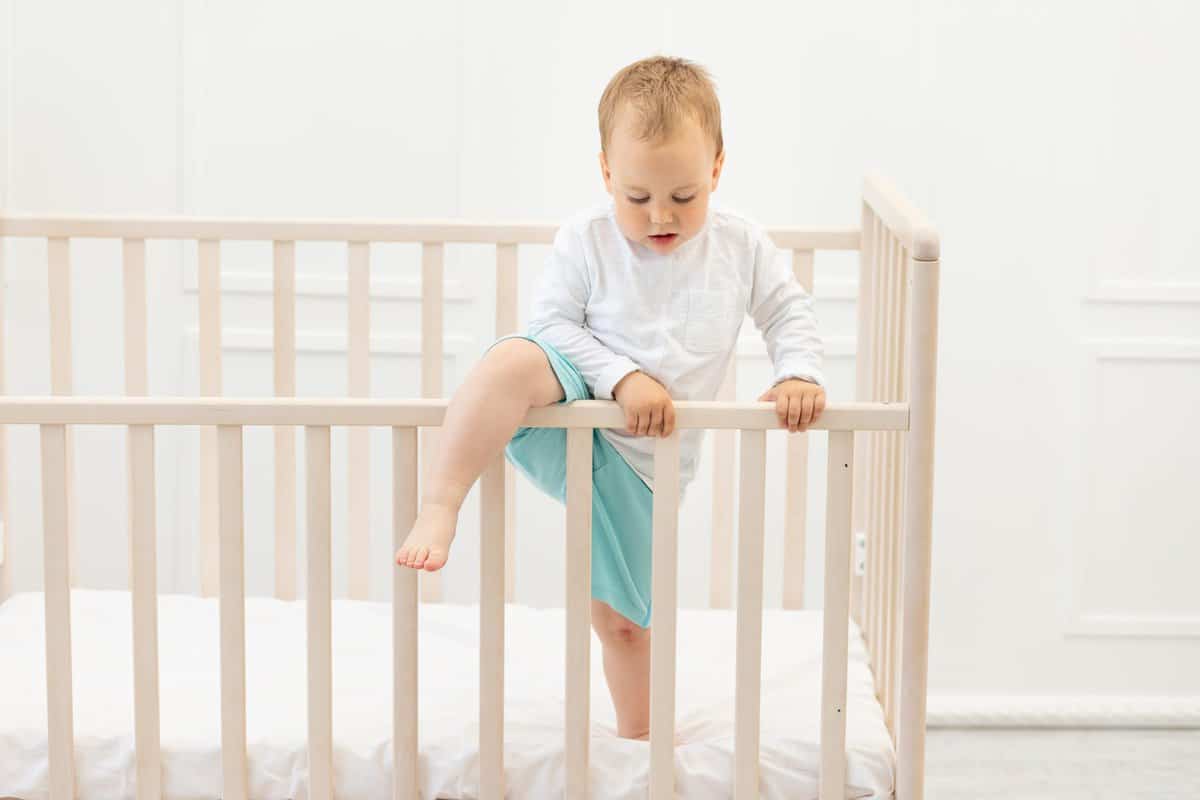
Transitioning out of a baby crib is a huge milestone for parents.
What comes after the crib, anyway? Most parents shift their child from a crib to a toddler bed, a smaller, more compact bed designed specifically for toddlers around 2 years of age.
How can you tell when it’s time to make that change?
Usually, the first sign that a baby has outgrown the crib is when the space it provides starts looking too cramped or when a toddler suddenly reveals their talent as an escape artist.
Most cribs have a height restriction of 35 inches.
If your baby can climb out of a crib, it’s time for a transition.
However, there are subtler signs, as well.
For example, even if your child shows an interest in escaping the confines of their crib and a desire to explore their surroundings, respond by developing their new behavior.
The toddler bed is useful, but they won’t use it for long. In fact, most children make another transition when they’re 3 to 4 years old, from a toddler bed to a twin bed.
That said, it can be tricky to pick an ideal time for a switch.
Knowing how much weight can a crib hold gives you an outline.
If you’re unsure about it, consult with your pediatrician. They can help you make an informed decision and instruct you as to how to help your child transition smoothly.
In Conclusion
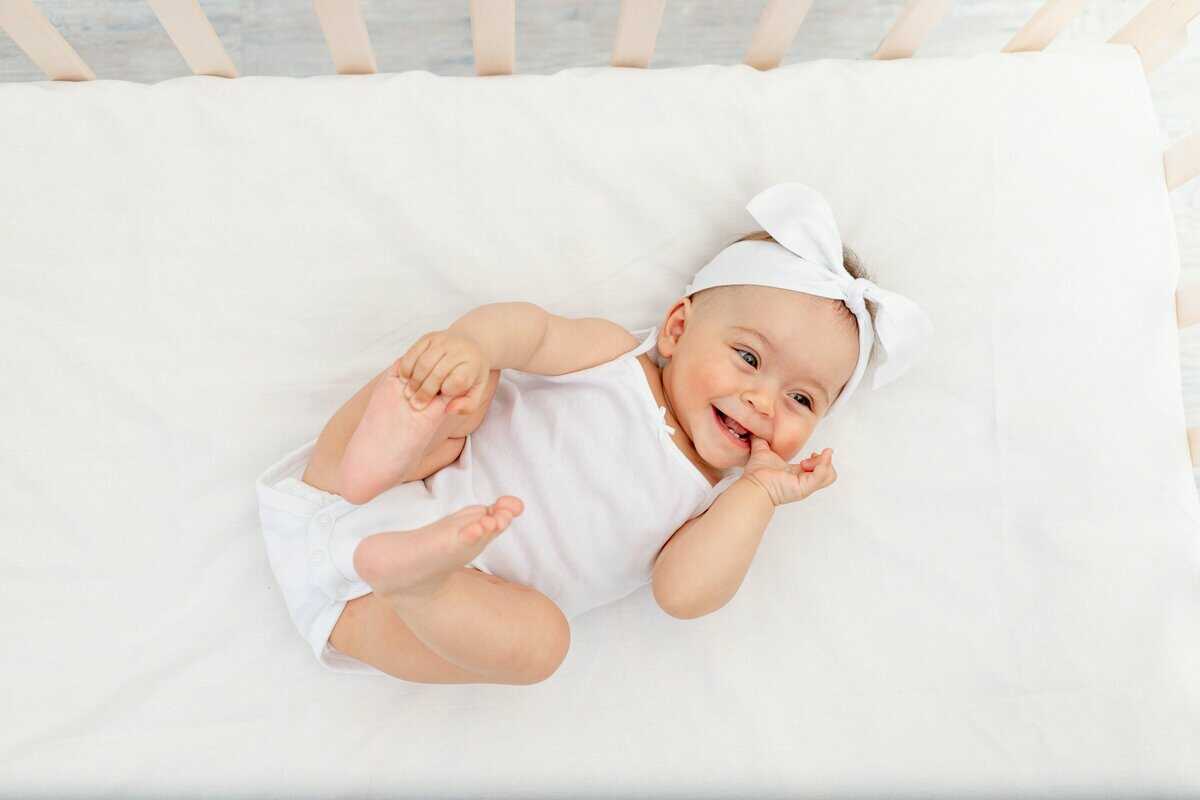
If you haven’t considered it previously, understanding how much weight can a crib hold is a must-know factor when purchasing a crib. It concerns the day-to-day use of a crib, as well.
The 35 inches height restriction and the maximum weight of 50 pounds are standard limitations that you have to know to keep your baby safe and comfortable.
However, the weight limit may vary depending on the crib in question.
How much weight can a crib hold depend on other factors, too, such as the structural design of the crib, the materials used, durability, wear and tear, and assembly quality.
The most durable cribs are made from wood and metal.
These factors combined improve the crib’s capability to hold weight.
As a responsible parent, it’s your job to follow the manufacturer’s instructions.
They concern not only the assembly process but tips and safety measures for daily use.
They aim to help you make the most out of your crib.
Ignoring weight limitations can result in injuries and, in certain cases, even death. That’s why it’s important that you prioritize your baby’s safety by minding the restrictions.
Add to that your enhanced knowledge of what makes a crib safe, as well as any other potentially harmful situations, hazards, or risks – and you’re ready to exercise caution.

Mother of three and a primary school teacher. I’ve always loved being around children and helping them, so I chose my path as a teacher. It is sometimes hectic with three children, but I am 100 percent into it and wouldn’t change it for anything in the world.

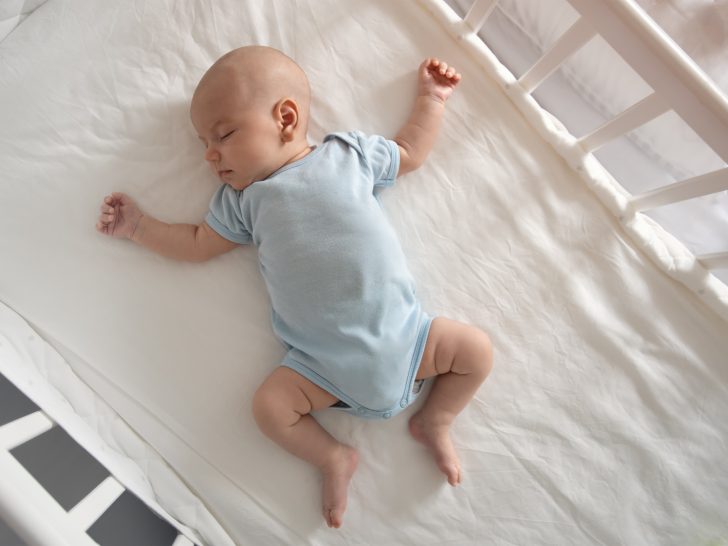
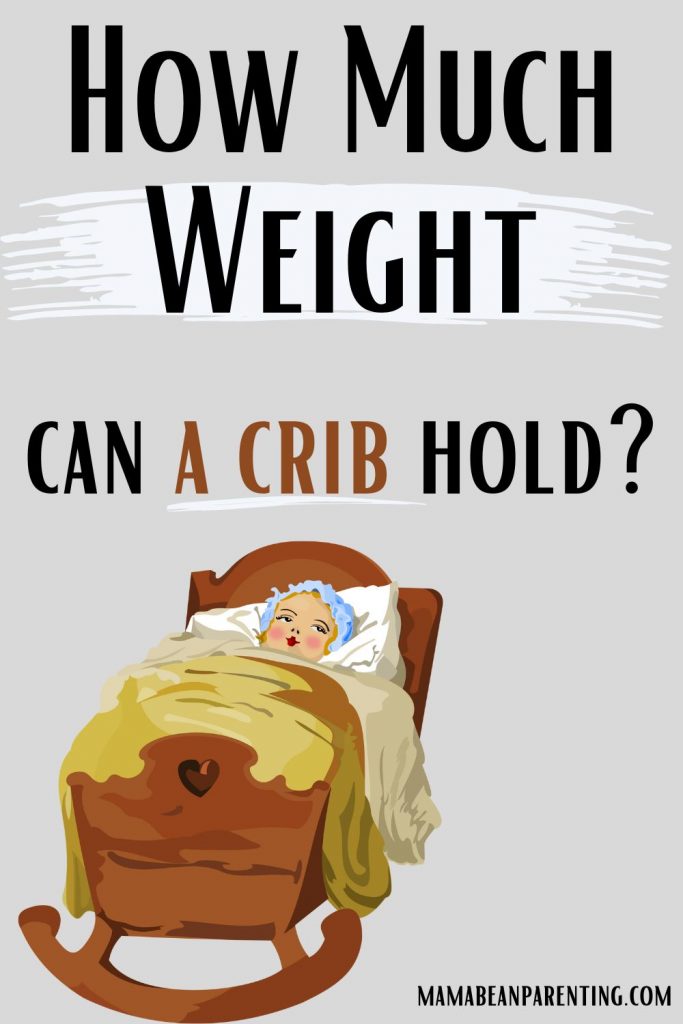
How Long Can a Baby Sleep in a Mini Crib? • Mama Bean Parenting
Tuesday 11th of April 2023
[…] the first thing that comes to mind is the weight limit. While traditional cribs can typically hold more weight, mini cribs may not be able to withstand […]
Mini Crib vs Crib: Making the Right Choice • Mama Bean Parenting
Wednesday 15th of March 2023
[…] forget to consider weight limitations. How much weight can a crib hold? Full-size cribs and mini cribs have different weight limitations and it’s important to […]